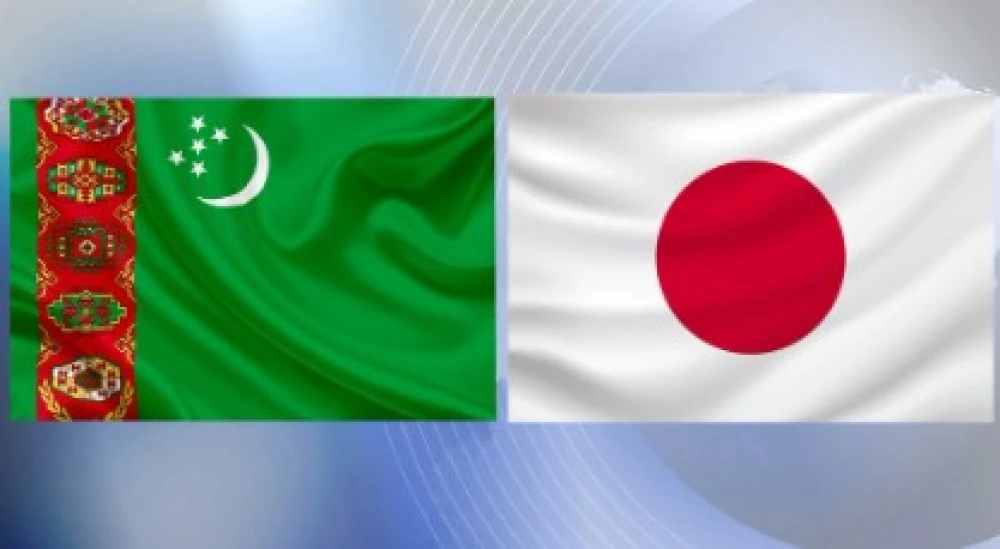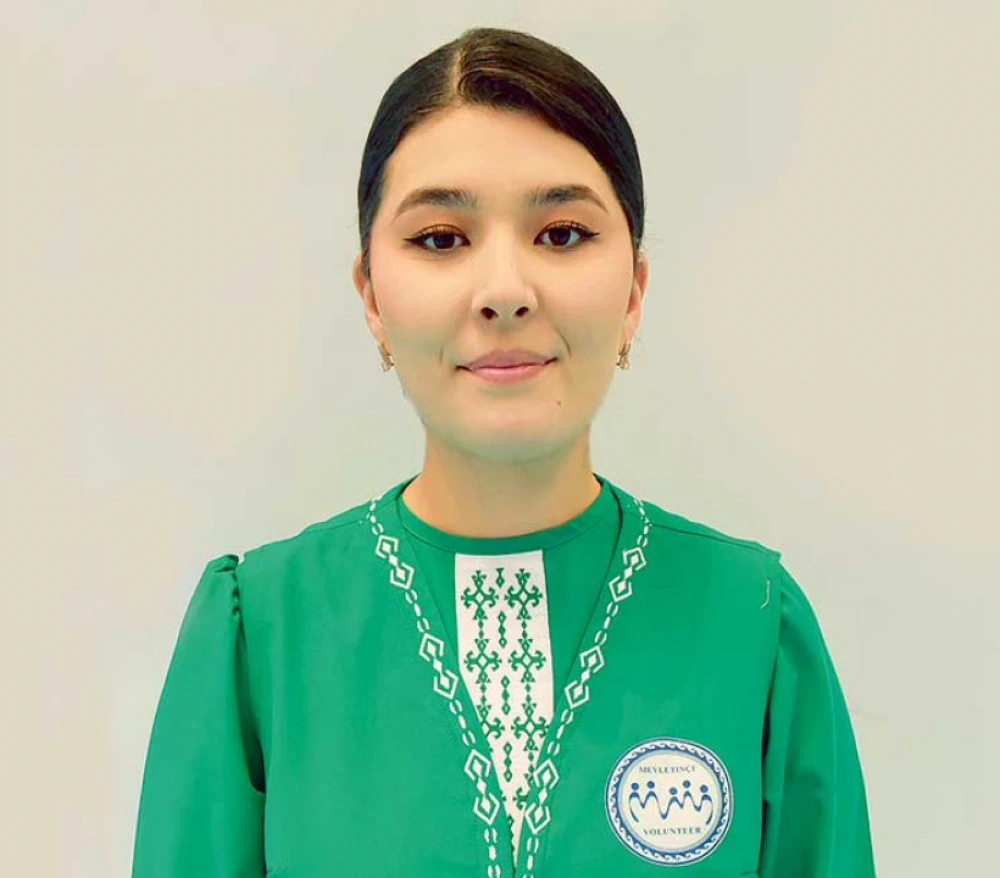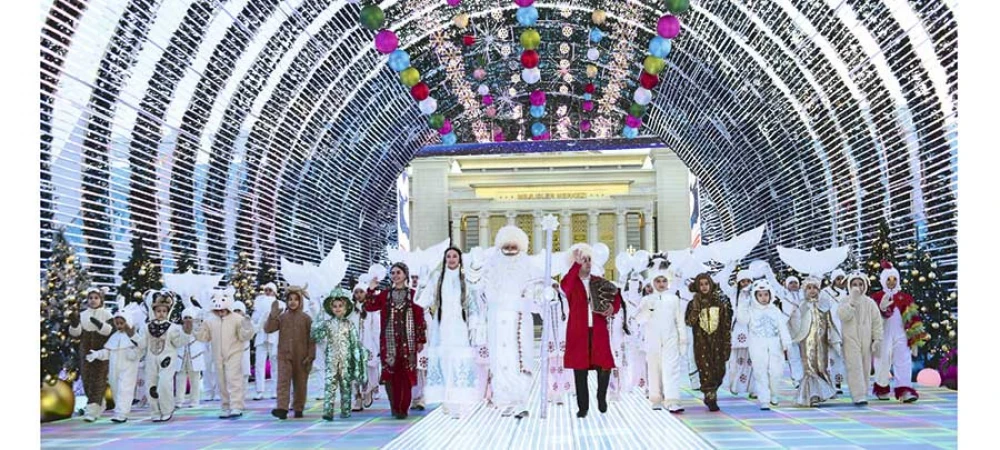
27/11/2023
1508
The inevitability of dialogue about peace or futility of new “Great Game” – Part One
Dr. Begench Karayev
At the initiative of Turkmenistan and in accordance with resolution 77/32 of the United Nations General Assembly, 2023 was declared the “International Year of Dialogue as a Guarantee of Peace.” The essence of this motto is reflected in the “New Agenda for Peace” of the UN Secretary-General.
As you know, in his analytical note released on July 20, 2023, UN Secretary-General Antonio Guterres proposed specific measures to prevent conflicts and strengthen security. The UN head explained the renewal of strategic approaches to solving these problems by the fact that humanity is today at a turning point – there is a transition to a new world order.
The UN Secretary General believes that the post-Cold War era has ended today. And although the contours of the new world order have not yet been defined, leaders around the world call multipolarity one of its defining features. “During this transition period, the balance of power is becoming increasingly fragmented due to the emergence of new poles of influence, the formation of new economic blocs and axes of rivalry,” says António Guterres. “Competition between major powers is increasing, and trust is decreasing between the countries of the global North and South.”
According to him, throughout the 78 years of its existence, the United Nations has constantly heard about its obsolescence and impending decline. However, by overcoming setbacks and eliminating shortcomings, the UN not only survived, but also remained the nerve center of the multilateral system. “Nevertheless,” the UN chief said, “we must clearly understand the scale of the problems facing us. What is at stake is not the future of the United Nations, but of our countries and of all humanity.”
As the UN Secretary-General stated: “War is always a choice to resort to weapons instead of dialogue, to coercion instead of negotiations, to imposition instead of persuasion. But this same principle opens up possibilities for us, for if war is a choice, peace can also be a choice. Now is the time to renew our commitment to peace.”
The UN Secretary-General’s words come as preparations are underway for the Future Summit on 22–23 September 2024 and the possible adoption of an action-oriented Pact for the Future.
There is a concept in science called “isomorphism”. When it comes to this concept, as a rule, the discussion is in line with the exact sciences, in particular mathematics, physics or chemistry. And this is not accidental, because the simplest explanation of isomorphism means analogy or identity in the structural structures of various similar objects, which are basically the object of fundamental research.
The advantage of the principle of isomorphism is that with its help it is possible to derive certain patterns of development of similar processes. Now let’s ask ourselves the question: can we use this principle in the study of global events or development trends in the field of world politics? If humanity evolves towards peace and progress, will the irreversibility of time be proven through the uniqueness of the tragedies of world wars?
The history of the famous Titanic shows that even when a ship sinks, people do not strive to escape together; on the contrary, everyone goes to the bottom alone, getting rid of the other unfortunate clinging to him. On a global scale, the recent pandemic demonstrated the same thing. There is a known case when a cargo plane loaded with vaccines was taxiing on the runway of one of the major Asian capitals to fly to Europe. Already taking off, the crew was forced to change course to deliver valuable cargo in the opposite direction. Here, most likely, it was not so much the auction prices that went up, but rather the clearly expressed pressure on the supplier. In a word, the pandemic has become another indicator of intransigence in matters of survival – even among seemingly allies.
At the height of the pandemic in mid-2020, even the terms “vaccine nationalism” and “deglobalization” appeared, which drew the attention of WHO head Tedros Ghebreyesus. In particular, he stated that “Increased demand and competition for supplies are already leading to ‘vaccine nationalism,’ and this poses the risk of strong price increases.” The situation was aggravated by the fact that global supply chains were disrupted, borders were closed, and authorities prohibited the export of medical goods, food and essential items abroad to meet the domestic needs of countries.
The international community needed time to cooperate and establish mutual assistance. In the context of a pandemic, this time has turned out to be decisive for some countries that have experienced particularly acute outbreaks of coronavirus. For example, according to media reports, from April to June 2021, China provided India with more than 5,000 ventilators, 21,569 oxygen generators, more than 21 million masks and approximately 3,800 tons of medicines. Chinese President Xi Jinping, in a telegram to Indian Prime Minister Narendra Modi, noted that humanity is a community with a common destiny, all members of which are closely connected. All countries can defeat the virus only through solidarity and cooperation.
In geopolitics, in contrast to the isomorphism of the exact sciences, as a rule, they resort to comparative methods, and often apply the principle of comparing historical analogies. From this point of view, we note that the first half, and most often a quarter of each of a number of past centuries, was marked by the emergence of a new system of international relations.
In particular, following the results of the Thirty Years’ War of 1618-1648, the foundations of the Westphalian system were laid. As historians say, this war was the first pan-European conflict and remained the bloodiest in history until the world wars of the 20th century. As a result, the political map of the Old World was redrawn, the hegemony of the Holy Roman Empire and the Catholic League over Europe irrevocably sank into history. In fact, the era of modern diplomacy, based on the equality of all countries and mutual recognition of each other’s sovereignty and borders, begins with the Peace of Westphalia.
By the end of the second decade of the 19th century, with the end of the so-called “Napoleonic Wars,” the Vienna System of International Relations was created, which was based on an alliance of monarchies called the “Holy Alliance of Monarchs and Peoples,” or in other words, the “Concert of Europe.” Traditional monarchies did not accept or recognize the “Corsican upstart,” as Alexander I referred to Bonaparte when he learned of his coronation as emperor in December 1804.
Napoleon’s credo is a great, independent, powerful France. He confirmed this view with his actions and demanded the same attitude from others. Being the sole dictator, Napoleon carried out a whole series of reforms to the country, which turned out to be very useful and effective. By order of Napoleon, a body of civil law was developed, known as the Napoleonic Code, as well as the Civil Code, the fundamental legislative act of France, which represents a large-scale codification of civil law and gave a powerful impetus to the subsequent codification process in many countries around the world.
The new Vienna system of international relations, created once again on the ruins of Europe, unlike the previous Westphalian one, was based not so much on the rivalry of the largest European states, but on their close cooperation. The guarantors of the system were England, Russia, Austria and Prussia, which became known as the “great powers”.
Almost a hundred years later, in 1919, the First World War ended and as a result the so-called Versailles-Washington system of international relations was created. Thus, world politics became global in scope and ceased to be primarily Eurocentric.
Speaking about the change of historical eras, one can observe that the chronological distance between them is significantly reduced. If almost 170 years passed between Westphalia and Vienna, then the historical development from Vienna to Versailles took about 100 years. Marshal Ferdinand Foch was right when he dropped a prophetic phrase upon learning of the final terms of the Treaty of Versailles: “This is not peace, this is a truce for 20 years!..”. Indeed, the interval between the First and Second World Wars of the twentieth century lasted only about two decades. And the half-century war, designated as the “cold”, began virtually immediately after the end of World War II. This was a systemic confrontation between yesterday’s allies, the winners of Hitler’s fascism.
It is necessary to make a reservation here that the fixation of September 1, 1939 as the beginning of the Second World War is still disputed by many historians. The basis for this is also the much earlier statements of a number of statesmen, politicians and diplomats. In particular, back in 1946, F. Noel-Baker, head of the British delegation at the final session of the League of Nations, said: “We know that the world war began in Manchuria 15 years ago,” i.e. in 1931. In turn , G. Stimson, US Secretary of State under President H. Hoover and Secretary of War in the administration of F. D. Roosevelt, traced the trajectory of World War II from the bombing of railroad tracks near Mukden (September 1931) to the atomic bombings of Hiroshima and Nagasaki (August 1945 .)
Judging by the text of the address of US President F.D. Roosevelt to the American people on December 9, 1941, by that time the world war was already raging across the vast expanses of Europe and Asia — In particular, Roosevelt stated: “Ten years ago, in 1931, Japan invaded Manchukuo without warning. In 1935, Italy attacked Ethiopia without warning. In 1938, Hitler occupied Austria without warning. In 1939, Hitler occupied Czechoslovakia without warning. Later in 1939, Hitler invaded Poland without warning. In 1940, Hitler occupied Norway, Denmark, the Netherlands, Belgium and Luxembourg without warning. In 1940, Germany attacked France and Greece without warning. In the current year 1941, the Axis powers, without warning, violated the borders of Yugoslavia and subjugated the Balkans. In the same year, 1941, Hitler started a war with Russia without warning. And now Japan has attacked Malaya, Thailand and the United States without warning. These are all links in one chain.”
The famous scientist and diplomat V.M. Falin (1926-2018) in this regard draws attention to the German-Italian intervention in Spain in 1936–1938, as well as the Japanese invasion of Central China in 1937. He notes that at the time Germany’s attack on Poland killed about 20 million Chinese. Thus, V. Falin also questions the starting date of the Second World War in official historiography – September 1, 1939.
The creation of a new, post-war order in international relations, the foundation of which was the UN system, did not foretell the beginning of another confrontation on a global scale. “I am confident that thanks to the agreements reached at Yalta, Europe will be more stable politically than ever before,” President Franklin Roosevelt said in his message to Congress, which he delivered on March 1, 1945, characterizing the results of the Yalta ( Crimean) Conference of the Allied Powers on February 4-11 of the same year.
However, with the onset of the Cold War, the historical Kronos only stated the foresight of Rudyard Joseph Kipling. As you know, Kipling wrote the following lines in “The Ballad of East and West” back in 1889:
Oh, East is East, and West is West, and never the twain shall meet,
Latest News

18/12/2025
Turkmenistan – Japan Strategic Partnership
17/12/2025
Bitarap Watanymyzyň üstünlikleri